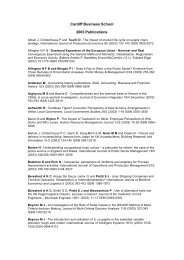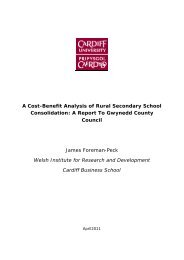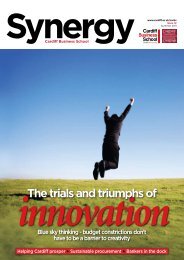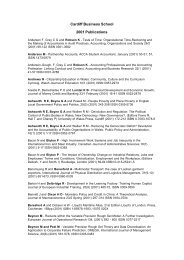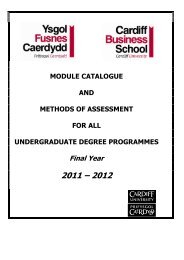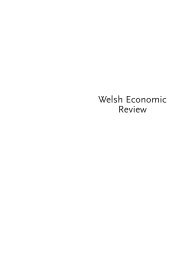Revisiting the Great Moderation using the Method of Indirect Inference
Revisiting the Great Moderation using the Method of Indirect Inference
Revisiting the Great Moderation using the Method of Indirect Inference
Create successful ePaper yourself
Turn your PDF publications into a flip-book with our unique Google optimized e-Paper software.
Table 5: Performance <strong>of</strong> <strong>the</strong> Optimal Timeless Rule Model in <strong>the</strong> <strong>Great</strong> Acceleration<br />
Tests for chosen data features<br />
Wald percentiles<br />
Directed Wald for dynamics 98.2<br />
Directed Wald for volatilities 89.6<br />
Full Wald for dyn. & vol. 97.3<br />
while <strong>the</strong> model ts <strong>the</strong> facts less well than in <strong>the</strong> case <strong>of</strong> <strong>the</strong> <strong>Great</strong> <strong>Moderation</strong>, it just<br />
about ts those <strong>of</strong> <strong>the</strong> turbulent <strong>Great</strong> Acceleration episode if we are willing to reject at<br />
a higher threshold. As we will see next, it also ts <strong>the</strong>m better than its rival Taylor Rule<br />
models.<br />
Unfortunately we are unable to test <strong>the</strong> DSGE model with <strong>the</strong> generally proposed<br />
pre-1982 Taylor Rules because <strong>the</strong> solution is indeterminate, <strong>the</strong> model not satisfying <strong>the</strong><br />
Taylor Principle. Such models have a sunspot solution and <strong>the</strong>refore any outcome is possible<br />
and also consistent formally with <strong>the</strong> <strong>the</strong>ory. The assertion <strong>of</strong> those supporting such<br />
models is that <strong>the</strong> solutions, being sunspots, accounted for <strong>the</strong> volatility <strong>of</strong> ination. Unfortunately<br />
<strong>the</strong>re is no way <strong>of</strong> testing such an assertion. Since a sunspot can be anything,<br />
any solution for ination that occurred implies such a sunspot|equally <strong>of</strong> course it might<br />
not be due to a sunspot, ra<strong>the</strong>r it could be due to some o<strong>the</strong>r unspecied model. There<br />
is no way <strong>of</strong> telling. To put <strong>the</strong> matter technically in terms <strong>of</strong> indirect inference testing<br />
<strong>using</strong> <strong>the</strong> bootstrap, we can solve <strong>the</strong> model for <strong>the</strong> sunspots that must have occurred<br />
to generate <strong>the</strong> outcomes; however, <strong>the</strong> sunspots that occurred cannot be meaningfully<br />
bootstrapped because by denition <strong>the</strong> sunspot variance is innite. Values drawn from<br />
an innite-variance distribution cannot give a valid estimate <strong>of</strong> <strong>the</strong> distribution, as <strong>the</strong>y<br />
will represent it with a nite-variance distribution. To draw representative random values<br />
we would have to impose an innite variance; by implication all possible outcomes would<br />
be embraced by <strong>the</strong> simulations <strong>of</strong> <strong>the</strong> model and hence <strong>the</strong> model cannot be falsied.<br />
Thus <strong>the</strong> pre-1982 Taylor Rule DSGE model proposed is not a testable <strong>the</strong>ory <strong>of</strong> this<br />
25



